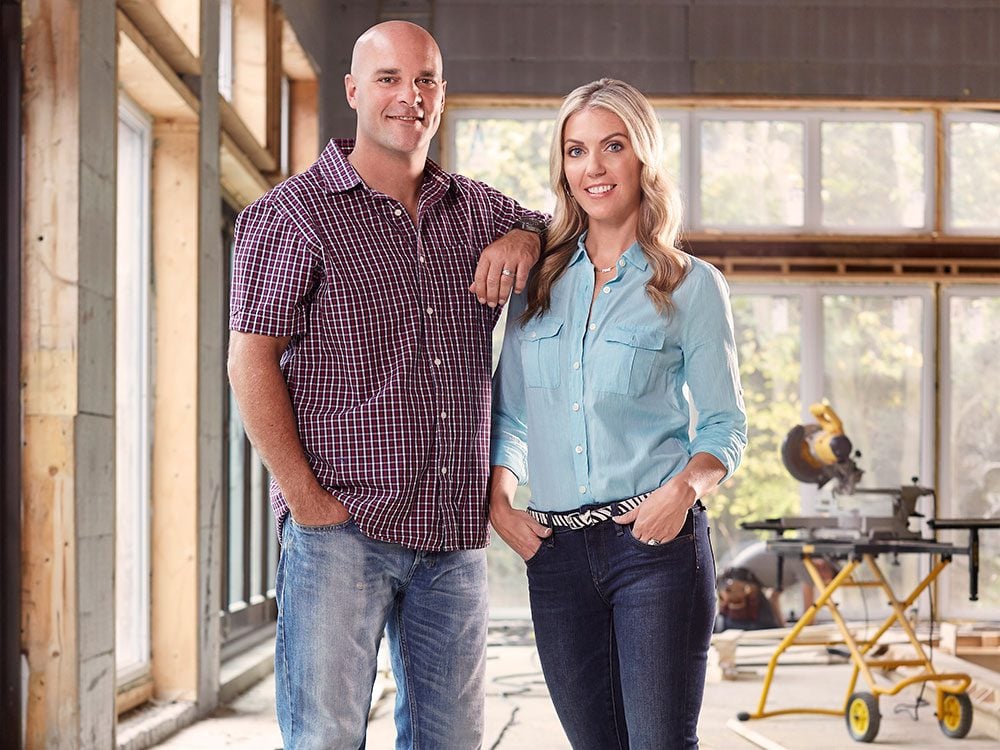
Bryan Baeumler’s final kitchen renovation… For now!
There always seems to be something to renovate at Bryan Baeumler’s house. Although the Baeumler family’s dream home seemed to be complete, the final season of House of Bryan saw Bryan and his wife, Sarah, tackling two new projects: a treehouse and chicken coop. There is, however an audible sigh of relief from both when asked whether or not a kitchen renovation is in the cards. “The kitchen is done,” Bryan states firmly—although one gets the impression from this serial renovator that there’s an unspoken “…for now” hanging in the air. Why the sense of relief? It’s likely down to the fact that Bryan’s worked on an estimated 250 kitchen makeovers over the course of his career. It’s a number that makes this contractor uniquely qualified to lay the ground rules for a successful kitchen renovation.
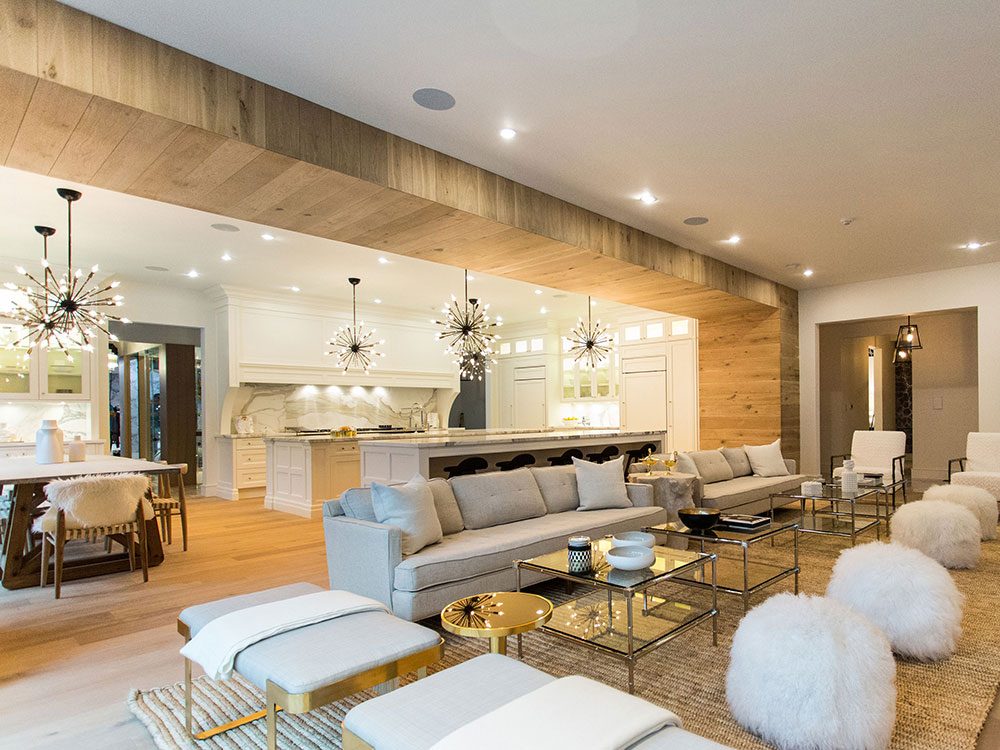
Open up your kitchen
Up until the 1980s, the kitchen served strictly as a room where meals were prepared. What’s more, it was often tucked away at the back of the house, and woefully cramped. That’s changing, says Bryan Baeumler.
“We don’t really do a ‘kitchen’ anymore, because it’s become more of an open-concept combination kitchen, living room and family room,” he says. “We call it a ‘living-kitchen.'” Case in point, the two massive kitchen islands in the Baeumler family kitchen (shown here) serve not only as a place for meal prep, but also as dining tables, and as desks where the kids do their homework. “It’s part of a larger entertaining space in the home,” says Sarah. “It still has to be functional, but people are also looking for it to be luxurious, because it’s now a space that guests see when they come into your home.”
Find out the home renovation mistakes that could send your property’s resale value into a tailspin.
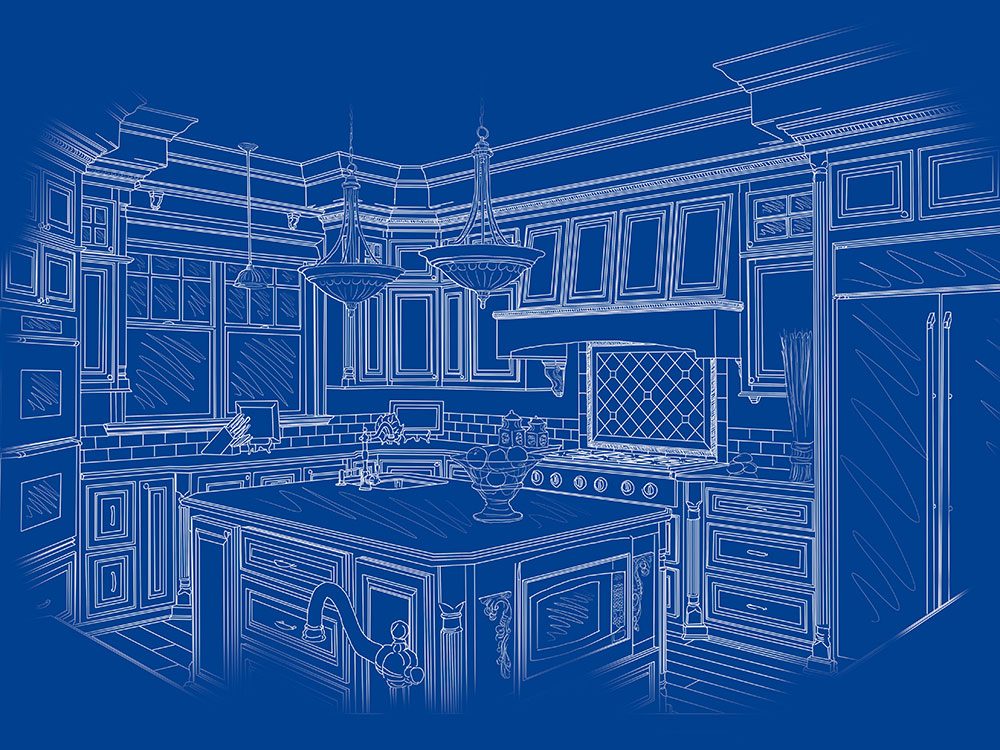
Think outside the kitchen triangle
Traditionally, a kitchen design plan was built around a “kitchen triangle”—the distance between the fridge, the stove and the sink. The contemporary shift towards larger, open-concept kitchens, however, means there’s less need to stick to that rigidly-defined configuration. “If you’re a short-order cook or a sous chef, yeah, you want that triangle where you can stand in one spot and do your ratatouille thing,” says Bryan. “But I think for the average family like us, you’re free to spread things out; laying out appliances in a way that works for you.”
Find out the surprising ways you’re shortening the life of your fridge.
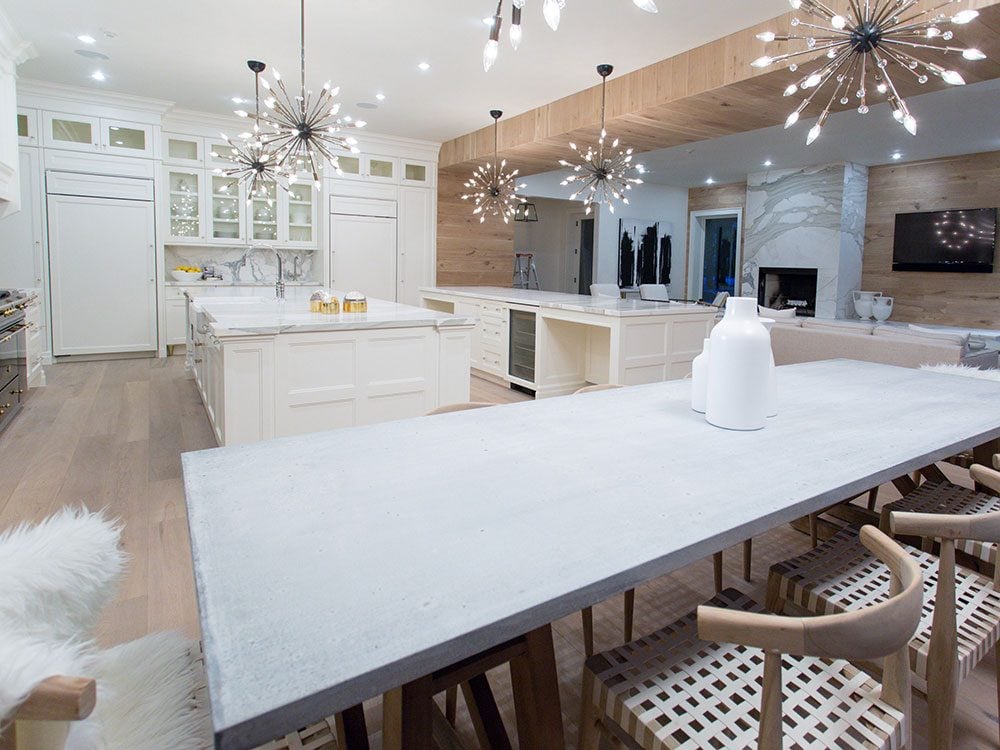
Consider who’s using the kitchen
If you’ve shopped for kitchen appliances recently, you’ll know how overwhelming the options are. Not only is the market for fridges, stoves and dishwashers flooded with a sea of different finishes to choose from, but there are other considerations as well, including size, the configuration of doors and drawers, and an array of time- and energy-saving bells and whistles. The upside to this mind-boggling assortment, says Sarah Baeumler, is that there are now infinite ways to customize your kitchen to suit the needs of the people who will be using the space. “Not everybody wants huge panelled fridges anymore—but we’re a big family and we’re out in the sticks so we needed one,” she laughs. “But we also opted for refrigerator drawers that are easy for the kids to access. That’s where we put their fruits, vegetables and snacks.”
Check out the pros and cons of stainless steel appliances.

Consider pre-fab kitchen cabinets
You can easily blow your entire kitchen design budget on custom cabinetry, but Bryan Baeumler says that’s not always the best investment—especially with the off-the-shelf cabinetry options that are currently on the market (IKEA‘s Sektion/Bodbyn kitchen cabinet system in Grey shown above). “You can take off-the-shelf cabinetry and install it in such a way that it looks like a million-dollar kitchen,” he says. The secret to making pre-fab look fab, according to Bryan, is to build on the basic box cabinetry with custom doors, moulding and trimwork. “At the end of the day, it’s those details that really make the difference.”
For an even more cost-conscious kitchen design update, Bryan suggests giving your existing cabinets a DIY facelift. Repainting the door panels and swapping out the hardware is often all it takes to breathe new life into old cabinetry.
Don’t miss these invaluable design tips from Brian Gluckstein.
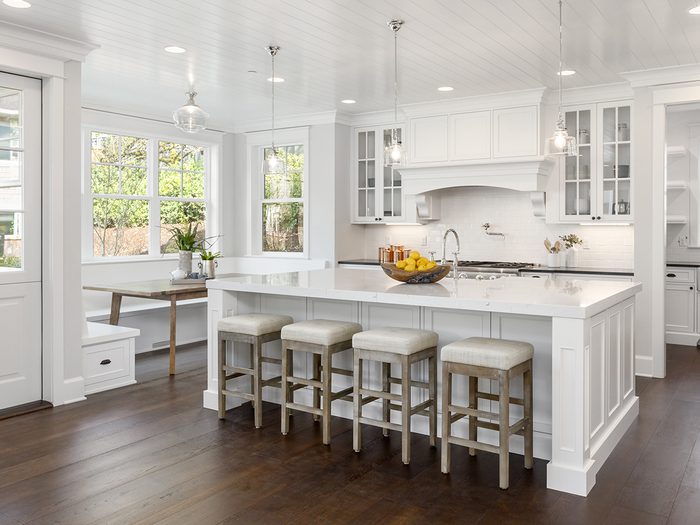
You can’t go wrong with a white kitchen
Of all the questions Bryan Baeumler fields from HGTV viewers, one gets asked more often than any other: “Why did you do your entire house in white?”
It’s a question that leaves Bryan slightly bemused, as his secret to keeping their home’s white countertops, cabinets and couches so pristine is simple: “We clean them,” says Bryan. “It scares me when people buy brown couches just so that you can’t tell how dirty it really is.” Sarah likens their white kitchen to any other big investment, such as a car. “You have to maintain it and treat it well in order for it to stand the test of time,” she says. “You can’t treat it like garbage and expect it to last—that’s just not the way of the world.”
Here’s how to clean your entire kitchen, according to The Marilyn Denis Show‘s Charles the Butler.
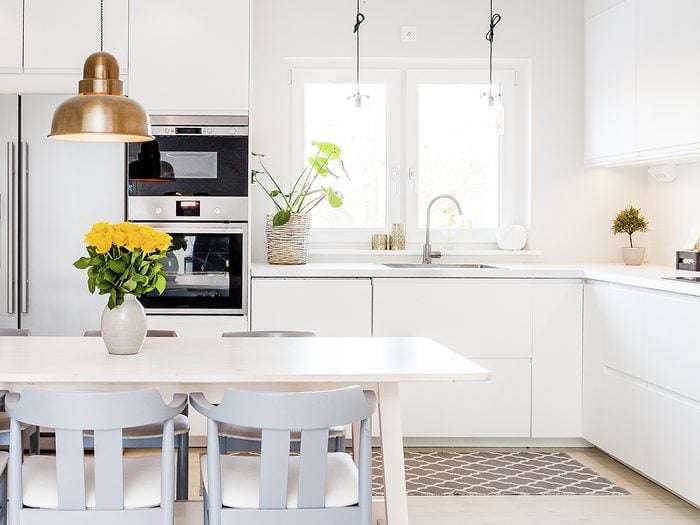
Decide whether you’re “loving” or “listing” your kitchen
How you break down your kitchen design budget largely depends on your plans for the home. “‘Adding value’ has a different meaning if you’re going to sell the home than it does if you’re going to live there yourself for years to come,” Bryan says. “If you’re going to be there forever, adding value could mean making it more comfortable for you. If you’re five-foot-two and want the cabinets lowered to 32-inches, do it. If you’re seven-foot-eleven, crank the cabinets up a little bit.” On the other hand, if you’re considering listing your home on the real estate market in the near future, Bryan says it’s better to avoid these custom flourishes. “Building your dream kitchen in a home that you plan to sell is a mistake, because it’s your dream kitchen—not necessarily somebody else’s.”
Here are more secrets real estate agents want you to know.
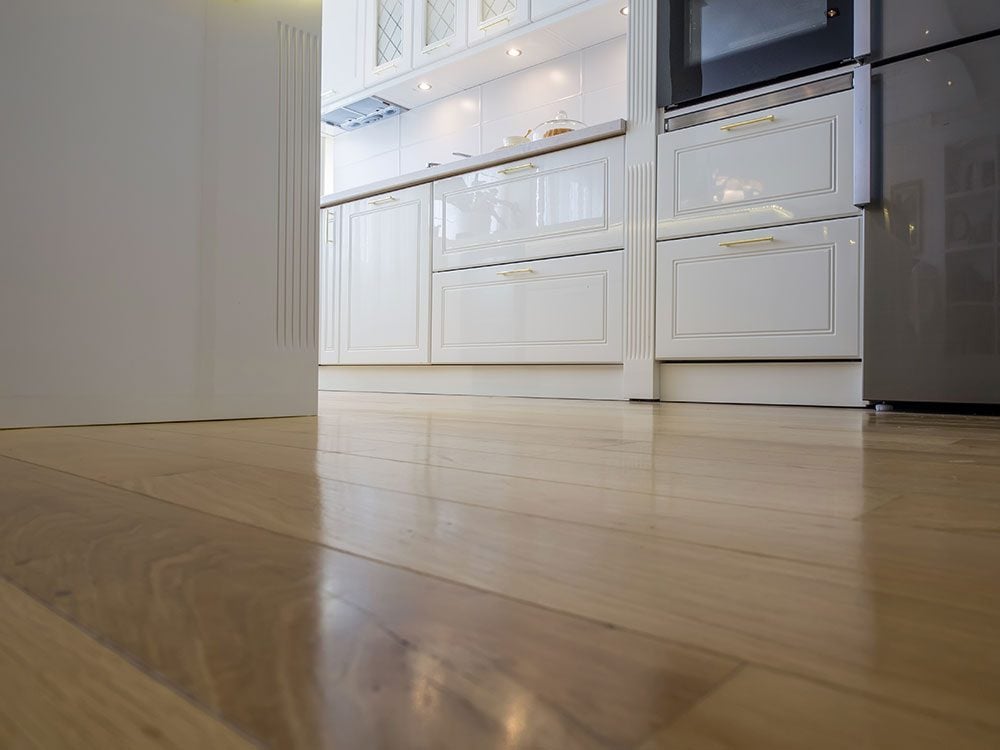
Know where to invest in your kitchen
When it comes to budgeting for a kitchen renovation, Bryan recommends splurging on the “permanent” elements of the space, namely the floor and cabinetry. “Appliances can be pulled in and out as needed; even countertops are easy to swap out and replace,” he says. “Instead, spend your money on making sure that everything behind the kitchen is updated: The electrical, the plumbing, and the insulation.” And because future buyers won’t appreciate the things they can’t see, he recommends recording these upgrades and bringing them to the table when you eventually list your property for sale. “It’s important to show that there’s added value back there, even if potential buyers can’t see it.”
Find out 16 budget-friendly tricks to boost your home’s curb appeal.
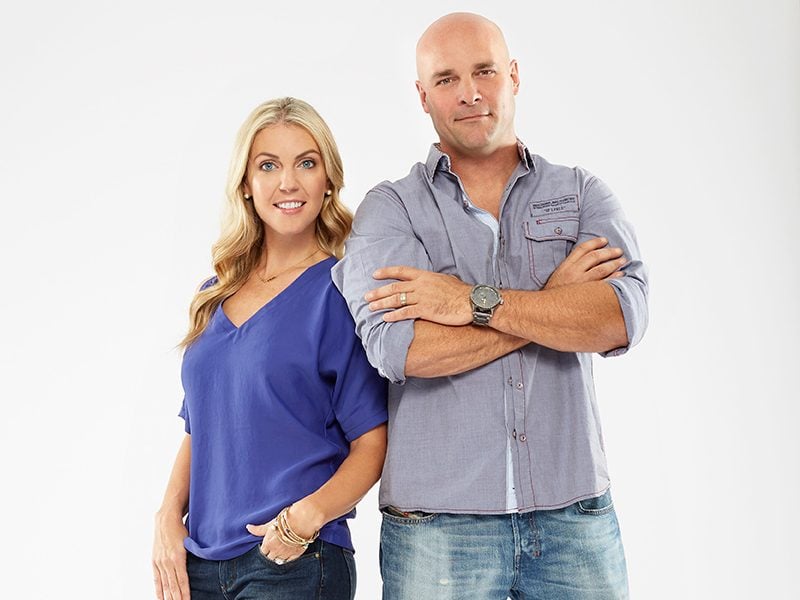
Know when to call in the pros
When planning a kitchen renovation, doing the job yourself often seems like a budget-friendly solution. Over the course of his career, however, Bryan Baeumler has seen enough DIY disasters to be wary of this cost-cutting measure. “If you’re going to do a kitchen renovation yourself, or even just tile a backsplash, it has to be perfect. If it’s not, you’re taking value away,” he says. “Potential buyers are getting smart. They know when something doesn’t look right, and ultimately, you’ve spent time and money doing something that has to be fixed by a professional if you want to make the sale.”
Looking for more expert tips from HGTV royalty? Here are Sarah Richardson’s best budget-friendly decorating fixes.